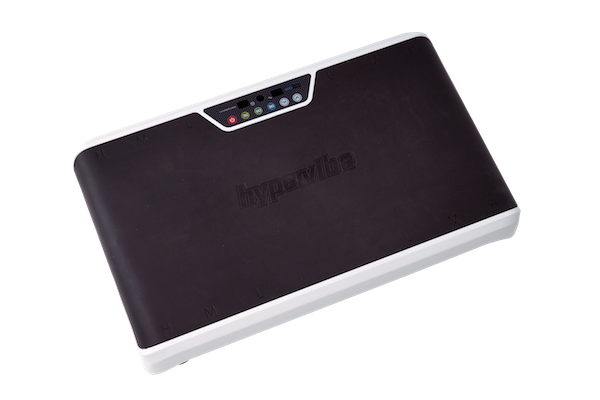
Should children be allowed to use a whole body vibration machine? Is WBV therapy safe for kids, or is it better to keep them away from vibrating platforms? Let’s see what science says about this controversial topic!
There’s no doubt that exercise, in all its forms, is good for kids, and that children who are healthy and able to exercise should be encouraged to do so, as healthy lifestyle habits are formed during childhood.
But vibration training is different from conventional exercise; it doesn’t involve a lot of movement and is less efficient in training the heart when compared to cardio exercises and playful activities like running, swimming or biking. So should kids practice this form of physical activity?
Preliminary studies and the existing reports suggest that whole body vibration is safe for kids, so it may be a good idea to explore this form of exercise especially in kids who can’t practice conventional strength exercises.
Vibration exercises were found to be effective in children suffering from a series of conditions, which will be detailed below.
The most common form of muscular dystrophy, which affects kids between 2 and 5 years old, Duchenne muscular manifests through severe symptoms, such as muscle weakness that starts in the lower body, or difficulty standing, walking or sitting.
Common manifestations of this condition also include an unsteady and waddling gait which leads to frequent falls and increases the risk of fractures, difficulty rising from a sitting or lying position, difficulty breathing which may eventually require the use of a ventilator and abnormal spine curvatures.
In some children, behaviour problems and learning disabilities may also be present, and most kids with Duchenne dystrophy require a wheelchair by the age of 12. This condition reduces the quality of life dramatically, and if the heart muscle becomes affected, it can be fatal.
It is difficult for a child with this ailment to perform normal exercises, but research conducted by scientists at the University of Calgary, Canada, suggests that WBV is well tolerated by kids suffering from this condition.
In the study above, 4 kids with Duchenne muscular dystrophy performed WBV exercises for 4 weeks, on a pivotal whole body vibration machine, 3 times per week. The treatment was tolerated well by all patients, but there were no significant changes in functional mobility.
Results suggested that whole body vibration may improve or maintain functional mobility and strength in kids affected by DMD, being a safe form of therapy.
Another condition that is common in kids and affects the muscles, causing weakness and spasticity, is cerebral palsy. The muscles in the lower body are more affected, and the walking ability is impaired. Also, muscles become stiffer and movement coordination decreases.
The intensity of symptoms can vary from mild to severe and disabling; in some kids, both sides are affected, and even if the patient doesn’t become completely paralyzed, the movement ability and quality of life decrease dramatically.
Vibration therapy can help in this condition. Scientists from the Ain Shams University, Egypt, found that exercising on a vibration machine can improve muscle strength in knee extensors and decrease spasticity in children with spastic diplegic cerebral palsy, leading to better motor performance and walking speed.
Results showed that 12 weeks of WBV therapy can lead to significant improvements in knee extensor strength, spasticity and walking speed, with no side effects.
Spina bifida is a defect of the neural tube which is inherited. In healthy children, the neural tube – structure from which the brain and spinal cord develop – closes by the 28th day after conception.
In babies with spina bifida, the last portion of the tube remains unclosed, causing symptoms like numbness in legs, feet and arms, spine deformities, impaired movements, fluid buildup in the brain, bladder and bowel problems, vision problems, learning problems and seizures.
A study published recently in the Child’s Nervous System journal investigated the use of vibration exercises in children with spina bifida. The mentioned study combined 6 months of home-based vibration exercises with intensive therapy at a rehabilitation centre.
Gait parameters were measured during and at the end of the study, showing significant improvements in walking velocity and mobility after the exercise sessions. Although at follow-up changes were not significant, an increase in muscle function and decreased contractures were observed after the training period.
The results suggest that whole body vibration with physiotherapy may be a safe and efficient solution for increasing motor function in kids with spina bifida.
Have something to add to this article? Comment below or join our Facebook community and share your thoughts with us.

Updated on: 08.09.2021 The lymphatic system is involved not only...

Stress can make you gain weight – we’ve heard this...

Various theories exist to answer this question. As you will...

Both rebounding and jumping on a trampoline are excellent ways...

The health benefits of using vibration plates to burn fat...